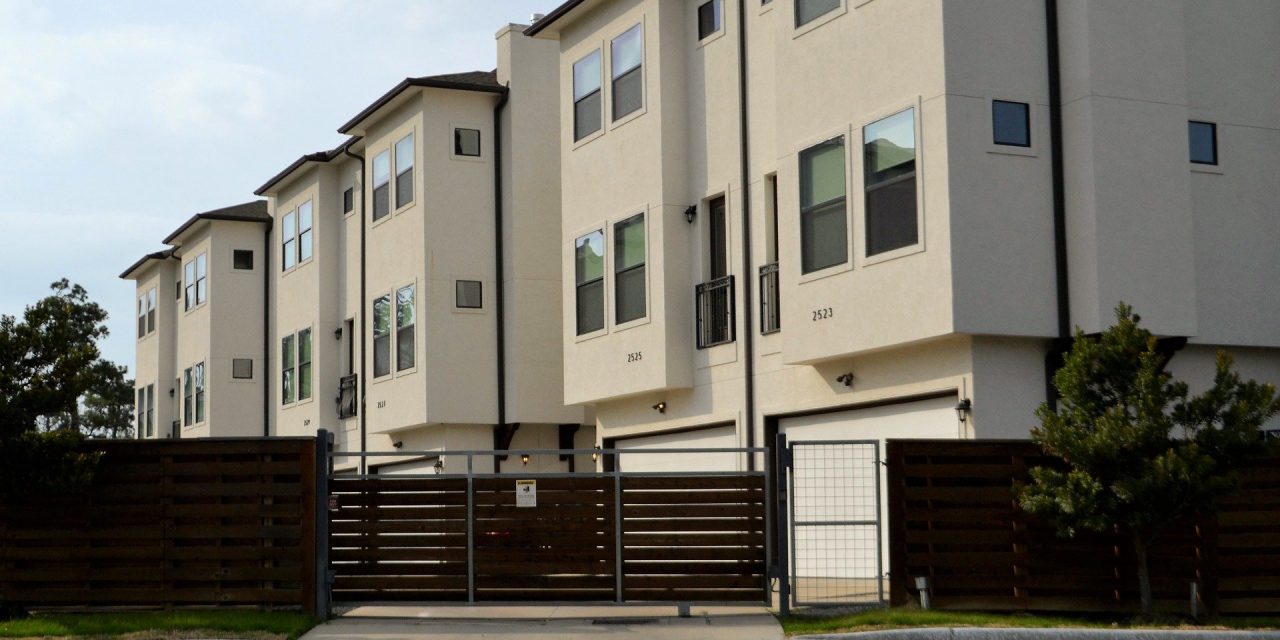Landlords know that being small is a big job.
That’s especially true considering residential buildings with fewer than five units comprise almost half of all rental units in the U.S., according to the Urban Institute. Small landlords have seen the big drawbacks of that responsibility grow unsustainably in recent years.
In addition to supplying nearly half of the nation’s rentals, the independent landlords who largely own, manage and live in these smaller units often do not make a profit. In fact, one-in-five regularly report annual losses.
These independent mom-and-pop landlords manage 77% of buildings with two-to-four units, according to an Urban Institute analysis. Smaller units tend to provide options for low-income renters and the landlords who manage them.
By the end of 2021, the typical U.S. renter is expected to be cost burdened — spending more than 30% of their monthly income on rent. But that’s already a reality in many California metros.
In June 2021, the average share of income spent by a typical renter was:
- 33% in Los Angeles;
- 33% in Sacramento;
- 34% in Riverside; and
- 36% in San Diego, according to Zillow.
Related article:
More California renters, homebuyers are cost burdened than ever before
With high rents and record job losses comes the inability to pay. Renters living in larger multifamily buildings were more likely to pay their rent during the pandemic than renters living in smaller units owned by mom-and-pop landlords.
The proof is in the payments. Between January 2020 and August 2021, the share of renters who paid their rent in full on time was 6 to 9 percentage points higher for larger multifamily buildings than for buildings with one-to-four units owned by independent landlords, according to the Urban Institute.
Here in California, a higher share of renters living in independently-owned buildings with fewer units — or “small” renters — made their rent payments compared to other states, such as Texas and Georgia.
Throughout the pandemic, between 88% to 91% of small renters in California paid their rent on time during any given month, according to data from the Urban Institute.
For Los Angeles, the share is more variable than the state’s average. Between 84% to 92% of Los Angeles’ small renters paid their rent by the end of the month during any given month between March 2020 and September 2021.
For San Francisco, the share is between 86% and 90%, though the survey contains fewer months of data, only spanning between March and September 2021.
With slim margins to begin with, California’s small landlords cannot easily afford to absorb missed rental payments the way their larger counterparts might.
Related article:
Assistance for landlords deferring maintenance during the pandemic
K-shaped recovery points to split trajectories
With missed rental payments a more common feature for small landlords than for big landlords, the hangover from the 2020 recession is shaping up to be a K-shaped recovery. With a K-shaped recovery, the economy impacts different segments of income classes in vastly different ways.
Economists refer to this as a K-shaped recovery since only some industries are thriving after this recession — on an upward path to recovery like the arm of the “K.” Meanwhile, other industries slide deeper into economic stagnation, trending down like the leg of the “K.”
For example, the strong stock market gains in 2021 helped investors grow their wealth. Those who were able to invest in stocks and real estate enjoyed rapid growth during the recession hangover period. This is particularly true of investors who bet on businesses that benefitted from the pandemic’s disruptions, such as those in the industrial property sector.
But for others, the descent that typically occurs during a recession were more pronounced. Many renters, hit hard by shuttering service industries and lost jobs, fell behind on rental payments.
Small landlords often made little to no profit even before the 2020 recession, and one-in-three landlords in that category also reported revenue declines in 2020.
Related article:
A third of mom-and-pop landlords grapple with lost rent revenue
Protection for mom-and-pop landlords
Landlords of two-to-four unit buildings typically earn less than landlords who own large multifamily buildings, while also housing renters who are more likely to be working in low-wage jobs, according to the Urban Institute.
Thus, tenants and landlords of rental properties with fewer units are more vulnerable to economic shocks than tenants and landlords of large multifamily buildings.
However, federal Emergency Rental Assistance (ERA) is available to assist households unable to pay rent. It’s not too late for California landlords with struggling tenants to apply. Landlords may be eligible to receive a full 100% reimbursement of missed payments. To apply, visit Housing Is Key.
While independent mom-and-pop landlords are more likely to struggle during the recession hangover than owners of large portfolios — and large buildings — many are also unaware of their ERA options.
Despite uneven gains across the board, California’s real estate market benefits with better employment prospects, increased household formations and rising buyer purchasing power. [See RPI e-book Real Estate Economics]
For real estate professionals hoping to earn fees helping tenants become homeowners, the next two-to-three years may be lean. But with the return of jobs and with a more sustainable and all-encompassing economic recovery, anticipated to begin around 2024-2025, home sales volume and home prices will again rebound as the economy and real estate market enters the next buy phase.
Related article:
How and when residential evictions will resume in California
Want to learn more about this topic? Click the image below to download the RPI book cited in this article.















